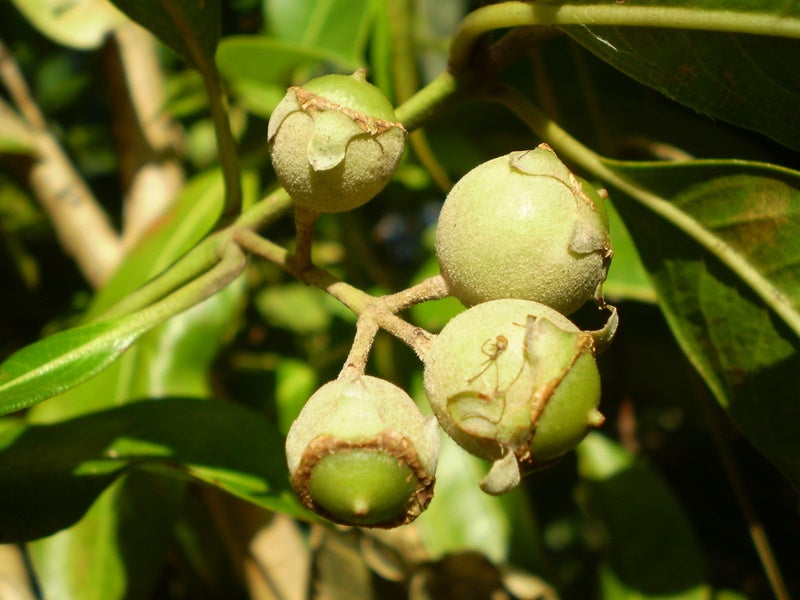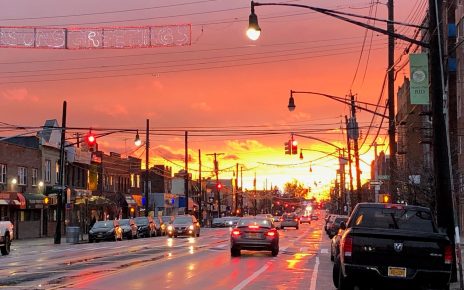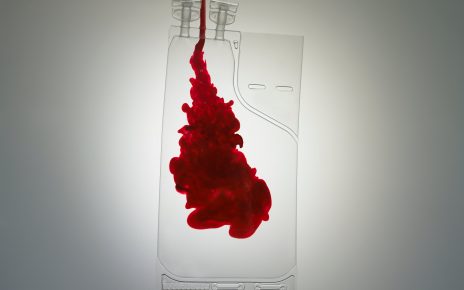For Australia’s native guava, death came in the form of a fungus.
Just 10 years ago, a virulent strain of the fungus Austropuccinia psidii arrived in New South Wales. First observed in Hawaii in 2005, the fungus causes a devastating plant disease called myrtle rust, which has quickly and mysteriously spread around the world—most likely through industrial shipping and other elements of our global economy. Each species that encounters the fungus displays different levels of resistance, but many plants experience deformed leaves, defoliation, stunted growth and even death. The fungus reproduces prodigiously, spewing out trillions of microscopic spores that can easily be carried to new areas by the wind.
Once the fungus hit Australia it quickly spread from coast to coast, infecting hundreds of species from the Myrtaceae family, which includes native guava, eucalyptus, tea trees and bottle brushes.
Native guava (Rhodomyrtus psidioides) was hit the hardest. Just a decade after myrtle rust first turned up in Australia, the once-common plant is now almost completely incapable of producing seeds, fruits or new growths throughout its range. According to a new study, 23 percent of native guava populations have disappeared. Another 61 percent have been reduced to “root suckers,” little growths that the fungus attacks and kills as soon as they emerge from the ground. Out of 66 regularly monitored guava sites in Queensland and New South Wales, 65 sites have lost every plant.
“The guava itself is just screwed,” says Rod Fensham, an ecologist with the University of Queensland and the Queensland Herbarium who’s the study’s lead author. “It’s so susceptible to the disease, it just kills every living tip. They’re unable to set viable seed, so they’re functionally extinct.”
And it’s not alone. The study predicts that myrtle rust will cause the “imminent extinction” of many other Myrtaceae species. “I reckon there’s at least 15 species that are soon going to be functionally extinct,” Fensham says. “They’re not seeding.”
He sees the effects of the fungus every day while he’s self-isolating at home during the COVID-19 pandemic. “I could take you down to my back garden where I’ve planted some of these Myrtaceae in the last month or two,” he tells me while video chatting from his back porch in Brisbane. “They’re showing signs of the rust already. I’m probably just going to watch them die.”
All this from a relatively invisible threat.
“It’s just these little dust particles floating in the air,” Fensham says. “It’s not a giant bulldozer or fires roaring through the landscape. It’s these particles that innocently arrived as a result of some unknown artifact of globalization.”
The loss of the guava and other Myrtaceae species, Fensham warns, could drive other ecological threats.
An Ecological Loss
As a widespread, fruiting tree, native guava traditionally supports a wide range of other species, including more than 100 pollinating insects. So myrtle rust’s invasion could result in “the local extinction of both the floral resource and disruption of associated plant–insect relationships” throughout the plant’s range, according to the paper.
And it’s not just insects. “Unlike eucalyptus that have got a hard, woody nut, these Myrtaceae have got a fleshy fruit which must be an important resource for frugivores,” Fensham says. “I know people who have had native guavas around their houses, and they say bats just loved them. They were gorging themselves on these guavas. That was only ten years ago and now the thing’s gone.”
Meanwhile the loss of native guava and other Myrtaceae could cause another problem: fire.
Lighting the Wick
Some Myrtaceae species affected by myrtle rust typically grow at the edge of Australia’s rainforests. There they can serve as a kind of barrier, slowing or preventing any fires along the edge from entering the heart of the rainforest. “Their trick is to retard the fire at the edge of the forest, and they do it in a spectacular fashion,” Fensham says. This isn’t the case for species such as eucalyptus, which encourage fire in the bush, but certain rainforest species have a dense, tightly packed canopy that appears to minimize ground layer growth of more flammable plants and block the wind that drives fires.
But as Myrtaceae plants disappear, what replaces them serves the opposite function. The same rainforest edges are also home to another invasive species, a beautiful flowing plant from the American tropics called lantana (Lantana camara). One of the world’s most invasive species, lantana is considered by the Australian government to be a “weed of national significance,” as its quick growth rate—it seeds six times a year—allows it to take over native brushland habitats, converting them to dense, impassable thickets.
It’s also toxic to livestock, and its woody structure serves as ready fuel for forest fires.
Fensham says as Myrtaceae disappears, lantana has the potential to become “sort of a wick into the rainforest.” If the fungus kills off the native plants and the invasive plants replace them, the lantana could carry fire into the normally protected rainforests and the wide range of unique species that live within them.
“It’s a really important source of biodiversity that’s going to be wiped out,” he says. Australia’s recent slate of brushfires has mostly left the county’s rainforests unscathed, but that could change as the loss of Myrtaceae allows lantana to continue its spread.
Resistance and Reservoirs
At the moment, the greatest hope for native guava is the potential that some individuals may show resistance to myrtle rust.
That hasn’t happened yet. “It just doesn’t seem…we can’t find them, for the guava,” Fensham says. There are plants holding on, but barely. The most notable example is at Byron Bay, a popular tourist destination, where just 10 trees remain. “We’re monitoring them, but we expect they’ll just succumb,” he says. “And even if they don’t succumb, they can’t fruit and seed, so they’ll just die of old age and there won’t be another generation.”
Other Myrtaceae species might have more resistance than the guava, although that’s still an area of active research. “It’s a bit early to say. But in some populations of some species, some individuals seem less affected than others.” If researchers do find resistant individuals or populations, there’s a possibility for keeping the various species going.
“The biggest hope for survival,” Fensham says, “is just that we can find some signs of resistance in the wild populations, and then reintroduce those resistant strains back into places where they used to be, but…” His voice trails off.
Meanwhile, the best chance for native guava’s continued existence lies in captivity. Two special “rescue gardens” outside the plant’s native range have been set up to keep the species from totally disappearing. “They’re just beyond the reach of the myrtle rust,” Fensham says. They’re drier than the guava’s normal habitats, so “we might have to water them in droughts, for example, and they become more like a garden than a translocated, self-sustaining population. So that’s wait and see.”
But so far they’ve helped to save the species from extinction, and the 80 plants growing there are doing well.
“What I can tell you is that in these gardens, the guavas look fantastic. So just beyond the reach of the disease in these dryer environments, in a town just an hour and a half to the west of here, the guavas are doing fine, they’re leaping out of the ground. I guess that’s a good news story, and we’ll be adding to these gardens other species that we’re worried about.”
What Fensham finds most unprecedented about myrtle rust is the speed of its spread and impact.
“You know, I can’t find any documentation of anything else this fast,” he says. “You’ve got the American chestnut blight and the Dutch elm disease, but this seems extraordinarily rapid and severe.”
It’s unprecedented even in Australia, which has one of the highest concentrations of endangered species in the world but relatively few plant extinctions to date.
“Europeans have done some pretty nasty things to this continent,” he says. “It’s remarkable with what we’ve thrown at this continent how few things have gone extinct. And here’s myrtle rust—10, 20 years, we could lose 15 species. Who knows, we could lose more.”
Which brings us back to COVID-19.
“We’ve tried to change the climate of the planet,” Fensham says. “We’ve poisoned our oceans with all these things. And maybe the most critical threat to humanity is just this tiny little organism.”
This essay first appeared on The Revelator on June 3, 2020.



